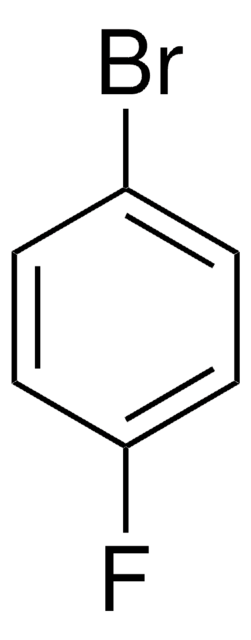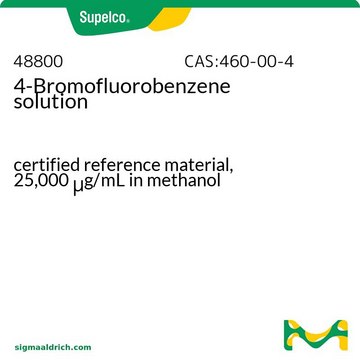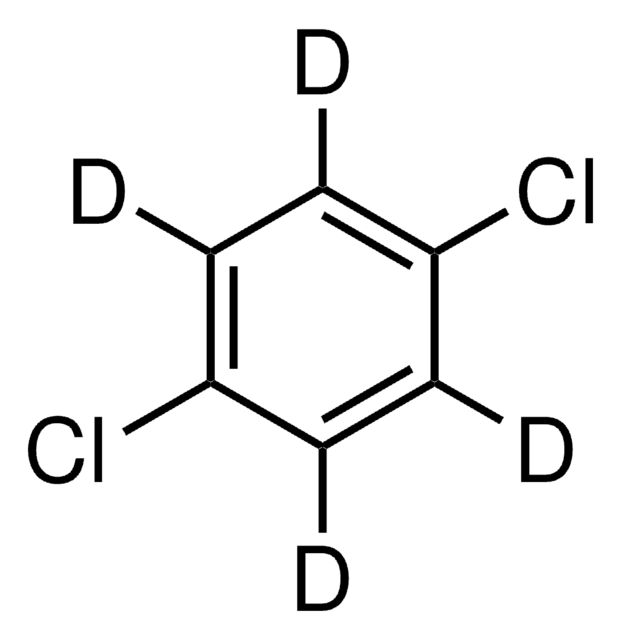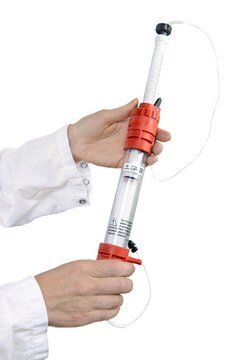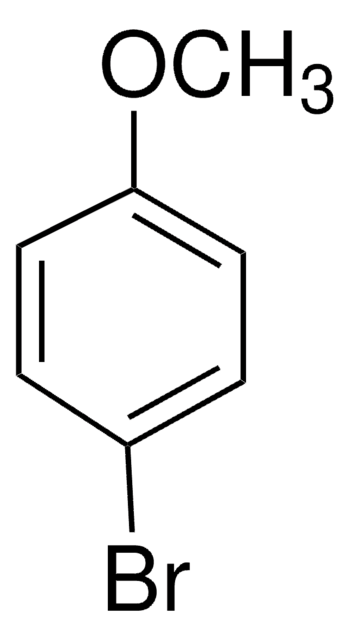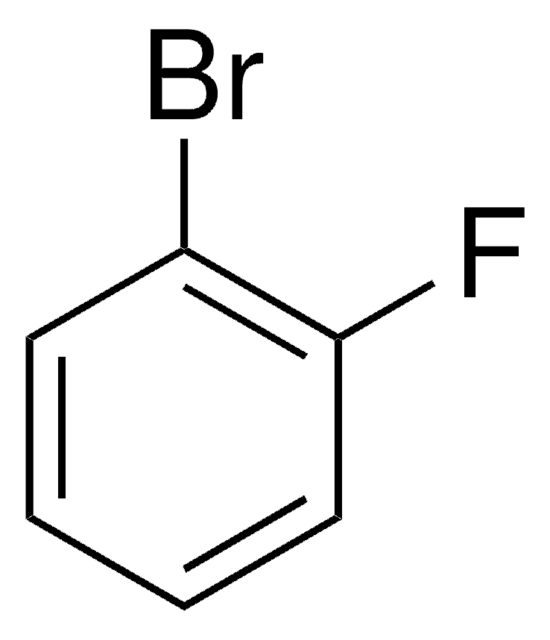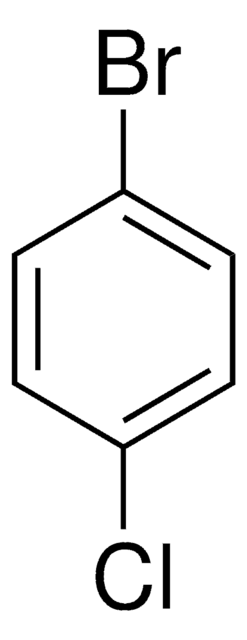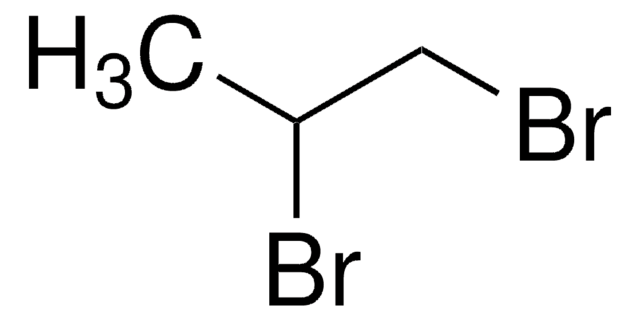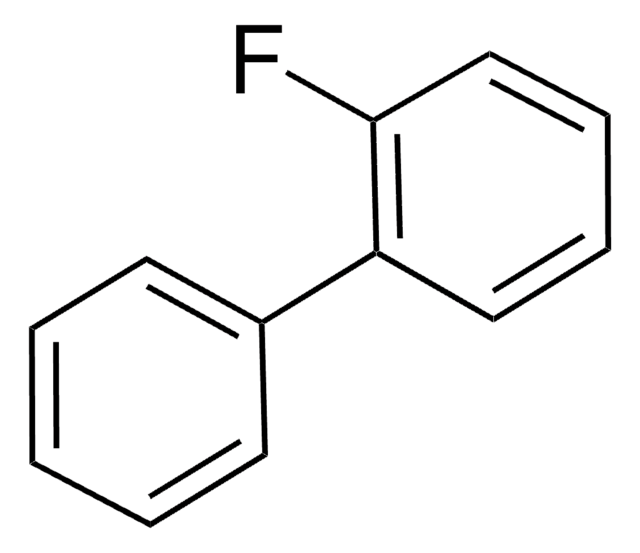442404
4-Bromofluorobenzene
analytical standard
Sinonimo/i:
1-Bromo-4-fluorobenzene
About This Item
Prodotti consigliati
Grado
analytical standard
Livello qualitativo
CdA
current certificate can be downloaded
Confezionamento
ampule of 1000 mg
tecniche
HPLC: suitable
gas chromatography (GC): suitable
Indice di rifrazione
n20/D 1.527 (lit.)
P. ebollizione
150 °C (lit.)
Punto di fusione
−16 °C (lit.)
Densità
1.593 g/mL at 25 °C (lit.)
applicazioni
environmental
Formato
neat
Temperatura di conservazione
2-30°C
Stringa SMILE
Fc1ccc(Br)cc1
InChI
1S/C6H4BrF/c7-5-1-3-6(8)4-2-5/h1-4H
AITNMTXHTIIIBB-UHFFFAOYSA-N
Cerchi prodotti simili? Visita Guida al confronto tra prodotti
Descrizione generale
Applicazioni
4-Bromofluorobenzene can act like a surrogate standard for the:
- determination of toxicity of diesel and water accommodated diesel fraction (WAF), towards microalgal species like Pseudokirchneriella subcapitata and Chlorella sp.MM3, using gas chromatography coupled with mass spectrometry (GC-MS).
- determination of the chemicals like benzene, toluene, ethylbenzene and xylene (BTEX) and their stable carbon isotopic values, in gasoline contaminated ground-water, using gas chromatography coupled with mass spectrometry (GC-MS).
Avvertenze
Warning
Indicazioni di pericolo
Consigli di prudenza
Classi di pericolo
Eye Irrit. 2 - Flam. Liq. 3 - Skin Irrit. 2
Codice della classe di stoccaggio
3 - Flammable liquids
Classe di pericolosità dell'acqua (WGK)
WGK 1
Punto d’infiammabilità (°F)
127.4 °F - closed cup
Punto d’infiammabilità (°C)
53 °C - closed cup
Dispositivi di protezione individuale
Eyeshields, Faceshields, Gloves, type ABEK (EN14387) respirator filter
Scegli una delle versioni più recenti:
Possiedi già questo prodotto?
I documenti relativi ai prodotti acquistati recentemente sono disponibili nell’Archivio dei documenti.
I clienti hanno visto anche
Il team dei nostri ricercatori vanta grande esperienza in tutte le aree della ricerca quali Life Science, scienza dei materiali, sintesi chimica, cromatografia, discipline analitiche, ecc..
Contatta l'Assistenza Tecnica.